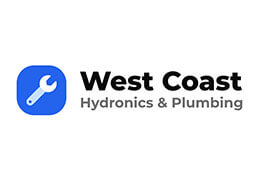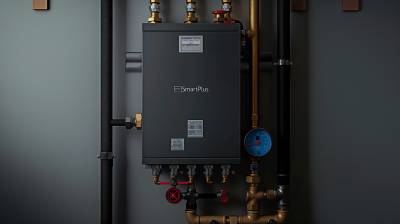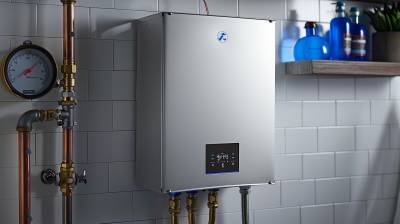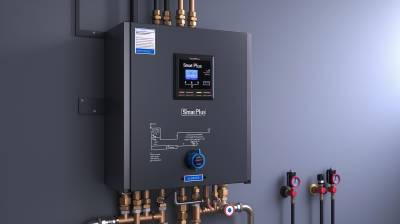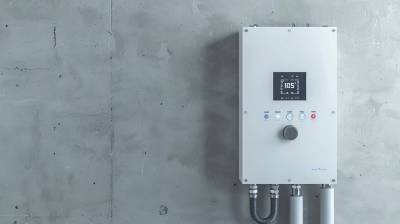Choosing the right water heater for your home is a significant decision, but have you ever thought about how it functions? If you have chosen a tankless water heater, there's one crucial component you should know about - the recirculation pump. In this article, we're diving deep into the topic of the tankless water heater recirculation pump, its function, installation and various other aspects related to it.
Understanding the Basics of a Tankless Water Heater Recirculation Pump
A tankless water heater recirculation pump pushes the warm water through your home's plumbing system. This enables you to have instant hot water from your taps and showers, eliminating the wait time for warm water. This pump has become an essential part of the tankless water heater operations and significantly contributes to enhancing your home's water heating system's efficiency.
How Does a Tankless Water Heater Recirculation Pump Operate?
The operation of a tankless water heater recirculation pump is straightforward. It moves the warm water through your home's plumbing system and returns the cool water back to the heater. This circulation process ensures you have instant and constant hot water supply whenever you need.
The Benefits of Installing a Tankless Water Heater Recirculation Pump
The benefits of installing a tankless water heater recirculation pump are far too many to ignore:
-
It conserves water: Traditionally, while waiting for the water to heat up, you would let the cold water run to waste. A recirculation pump cuts out this waste, saving a significant volume of water.
-
It enhances comfort: With a recirculation pump, you get immediate access to hot water, anytime. This is far more convenient, especially in cold weather.
-
It saves energy: The pump recycles the cool water instead of letting it go to waste, keeping the energy use to a minimum and reducing the strain on the heater while maintaining its efficiency over the long term.
Choosing the Right Recirculation Pump for Your Tankless Water Heater
Choosing the right recirculation pump depends largely on your specific requirements, the size of your house, and your budget. You should also consider the compatibility of the pump with your tankless water heater. Another crucial aspect to keep in mind is the installation process and cost related to it. Speak with professionals and ask for their assistance to identify the right pump for optimal performance and efficiency.
Correct Installation of Your Tankless Water Heater Recirculation Pump
The installation of a tankless water heater recirculation pump is a task that requires precision and professional assistance, unless you are well-versed in such procedures. The process typically involves installing the pump at the water heater or at a return line at the point furthest from the heater. The process may vary depending on the type and model of both the heater and the pump. Understanding the complex steps involved is crucial to ensure efficient functioning and longevity of the pump and heating system.
Troubleshooting Tips for a Tankless Water Heater Recirculation Pump
Like any other mechanical component or appliance, a recirculation pump may also face issues over time. Here are a few troubleshooting tips that could help:
-
Regularly monitor the water temperature to make sure it’s consistent.
-
Check the pump for any signs of wear and tear or performance issues.
-
If faced with challenges beyond your knowledge, don't hesitate to reach out to professionals to avoid causing more damage to the system.
Overall, a tankless water heater recirculation pump is now becoming a vital part of modern homes. Not only does it enhance the efficiency of your water heating system, but it also contributes to significant savings in terms of both water and energy.
Frequently Asked Questions about Tankless Water Heater Recirculation Pumps
How does a recirculation pump work for a tankless water heater?
A recirculation pump for a tankless water heater works by continuously circulating hot water in the pipes, ensuring immediate hot water whenever a tap is turned on. By circulating the hot water, the recirculation pump eliminates the common issue of waiting for the water to warm up, which is a common issue in systems without pumps.
Do all tankless water heaters need recirculation pumps?
Not all tankless water heaters need recirculation pumps. However, if your home possesses a larger size or if you're facing long delays for hot water, a recirculation pump can be a valuable addition to your tankless water heater system to provide instant hot water and save water in the long run.
Are there benefits to using recirculation pumps with tankless water heaters?
Yes, there are several key benefits of using recirculation pumps with tankless water heaters. Primarily, they provide your home with instant hot water, which means you won't waste water waiting for it to warm up. Secondly, they contribute to significant water saving and longer lifespan of your tankless water heater as it reduces the amount of cold water running through the heater.
What are the different types of recirculation pumps for tankless water heaters?
There are mainly two types of recirculation pumps used for tankless water heaters: integrated and non-integrated. Integrated pumps are built directly into the water heater and controlled by the unit's central control. Non-integrated pumps, on the other hand, are installed separately and may require additional features such as timers or aquastats for control.
How can I install a recirculation pump with a tankless water heater?
Installation procedures for recirculation pumps vary based on the type of pump and the specifics of your tankless water heater. Generally, it involves connecting the pump to your water heater and the farthest water fixture in your home. For accuracy and safety, it is recommended to hire a professional plumber or follow the manufacturer instructions closely if you're attempting to install it yourself.
Do recirculation pumps for tankless water heaters consume a lot of energy?
While a recirculation pump does use electricity, the consumption is relatively low compared to the energy savings it can provide in the long run by reducing the run-time of the water heater. The exact energy consumption can vary based on the model of the pump and the usage at home, but it's generally pretty energy-efficient.
Can a recirculation pump affect the lifespan of my tankless water heater?
Yes, a recirculation pump can actually extend the lifespan of your tankless water heater. By circulating warm water, the pump reduces the amount of cold water running through the heater, which can reduce the wear and tear on the unit, thus extending its lifecycle.
Can I use a recirculation pump if I have a gas tankless water heater?
Yes, recirculation pumps can be used with both electric and gas tankless water heaters. However, keep in mind that the pump itself will need an electricity source to operate. Therefore, always ensure compatibility with your particular model and consult with a professional if needed.
Are there any maintenance requirements for recirculation pumps?
While recirculation pumps are generally low maintenance, regular check-ups and cleaning are recommended to preserve their lifespan. Any unusual noises or decrease in performance should be addressed by a professional to prevent any major issues or damage to your tankless water heater.
Pros of Using a Tankless Water Heater Recirculation Pump
Instant Hot Water
One of the biggest advantages of a tankless water heater recirculation pump is that it provides instant hot water. These systems maintain water at a specific temperature within the pipes, so there's no need to wait long for the water to heat up, ensuring immediate hot water whenever you need it.
Increased Energy Efficiency
-
A tankless water heater recirculation pump is highly energy-efficient as it only heats the water that's used. There's no need to maintain a full tank of heated water all the time, thereby reducing energy consumption.
-
By eliminating the need for constant reheating, these systems can help you save significantly on your energy bills.
Reduced Water Waste
With a tankless water heater recirculation pump, water is instantaneously heated as soon as it's needed, thus reducing the amount of water that's wasted while waiting for the water to reach the desired temperature. This makes it an environmentally-friendlier option in comparison to traditional water heaters.
Long Operational Life
-
These systems usually last longer than traditional water heaters. A tankless water heater with a recirculation pump can last up to 20 years with proper maintenance.
-
Maintenance is also straightforward, which adds to the system's longevity.
Cons of Using a Tankless Water Heater Recirculation Pump
High Initial Costs
The costs associated with installing a tankless water heater recirculation pump can be higher than that of traditional water heaters, especially if you need extensive piping modifications. While the increase in energy efficiency can offset these costs over time, it requires a considerable upfront investment.
Limited Hot Water Supply
-
While a tankless water heater recirculation pump provides instant hot water, it may not be able to provide it in large quantities simultaneously.
-
These systems may struggle to supply hot water for multiple high-flow applications at once, like running a shower and dishwashers simultaneously.
Need for Regular Maintenance
Regular maintenance is crucial in maximizing the lifespan of a tankless water heater recirculation pump. Although the maintenance process is straightforward, failing to routinely carry out this maintenance can lead to a decrease in efficiency and potential system damage.
Complicated Installation Process
-
The installation process for a tankless water heater recirculation pump can be complex, mainly if your home isn't initially set up for this type of system.
-
This typically means you will need to hire a professional for the installation, adding to the overall cost.
The decision to install a tankless water heater recirculation pump depends on your specific needs and budget as it offers several benefits such as energy efficiency and reduced water waste but also comes with drawbacks like high initial costs and complexity in installation.
Summary
The benefits of using a tankless water heater recirculation pump are vast. It offers instant hot water, reduces water usage and definitely saves energy. It's an investment worth considering if you're thinking about a way to increase efficiencies in your home.
No more waiting for the water to heat up before you can take your morning shower. With a tankless water heater recirculation pump, hot water is just a faucet-turn away. So, whether you're building a new home or upgrading your old water heater system, give this option a serious thought.
When we talk about smart solutions that make living easier and conserve resources, a tankless water heater recirculation pump undoubtedly fits the bill. A small yet significant way to contribute to the environment and improve your home life quality. You'll find this decision will pay you back in numerous ways in the years to come.
About West Coast Hydronics & Plumbing
Welcome to West Coast Hydronics & Plumbing, your trusted and reliable plumbing partner from Sacramento, CA. With an unwavering commitment to quality and customer satisfaction, we bring to the table a broad spectrum of exceptional plumbing and Hydronic heating services. Our team of highly skilled and dedicated professionals is always ready to solve your best and worst plumbing and heating woes. Need to know more? Dig into the work we do at All Plumbing Solutions CA and let's kickstart your next project!
